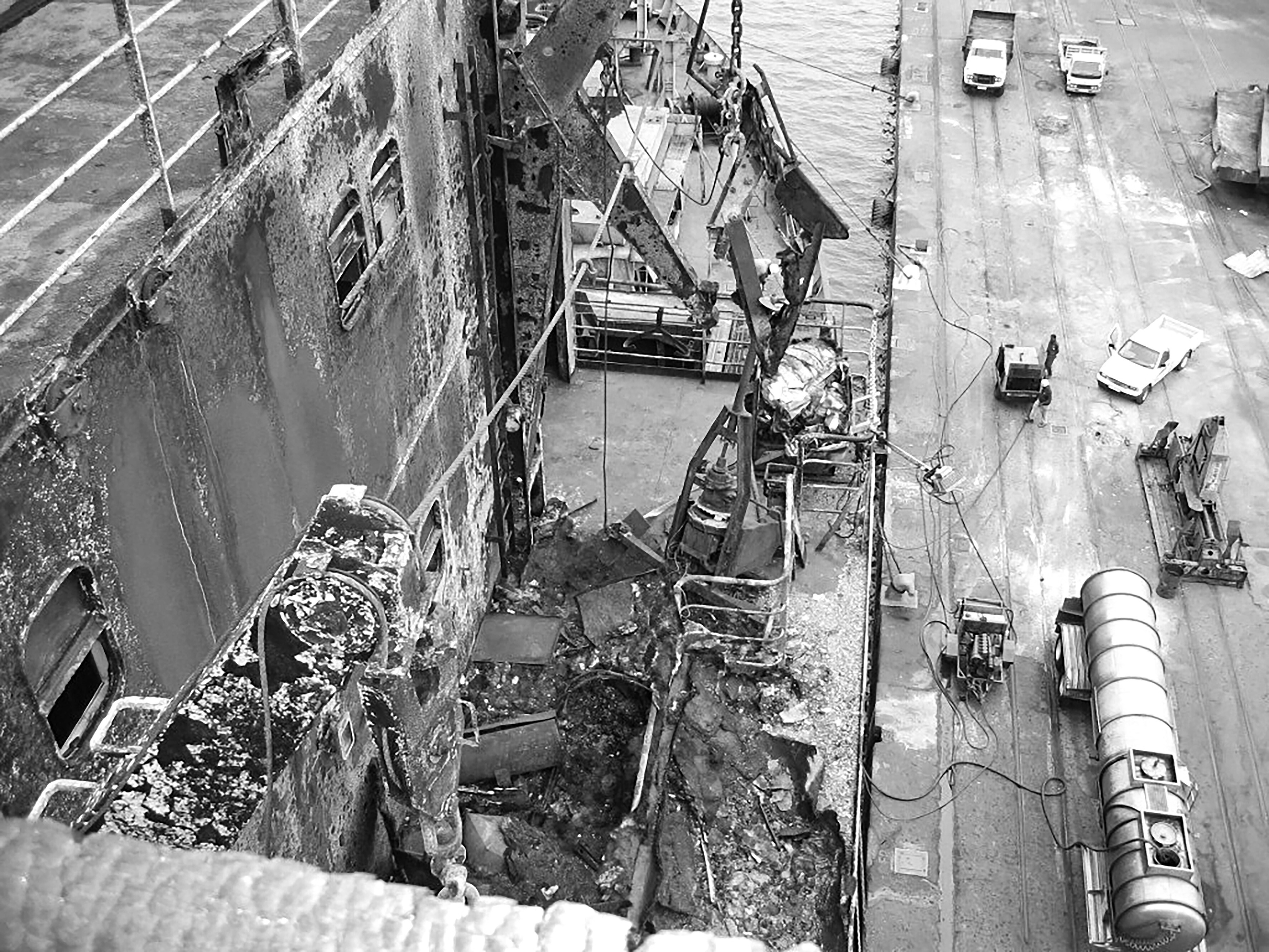Restoring fire damage
The effects of fire
Even after being extinguished, a fire still has the power to wreak destruction. In order to minimise further business interruption and loss of hire, you’ll need to take immediate action.
Fire damage is not limited to the flames’ reach
Burning plastics, for instance, can release hydrogen chloride gas (HCl). When this dissolves in freshwater – or, worse, saltwater – used to quench the flames, it visibly corrodes metal surfaces within a matter of hours.
That means machinery, electronics and metal surfaces will suffer additional costly damage even if they did not come into direct contact with the fire or water.
Act immediately to avoid further losses
Once the fire is out, the emergency isn’t over. Every minute counts in the fight to prevent further costly damage caused by visible and invisible corrosion.
When you call us, your BELFOR project manager will perform a quick on-site test for HCl. Based on the results, we will recommend and immediately initiate the measures necessary to containing the damage.
To obtain more accurate data, we can perform a titration test or take a wipe sample for further laboratory analysis. Whether water damage is a result of fire-fighting efforts or not, our analysis usually also includes measuring moisture levels.
From there, we put together a plan to get you back up and running fast.
Remediation is complex and requires expertise
Our many years of experience remediating fire damage on various scales aboard ships, in cargo holds and on offshore installations have taught us that success depends on two factors – time and expertise.
Our specialists have not only handled thousands of cases of on- and offshore fire damage around the world but are also always ready to respond to the next call.



